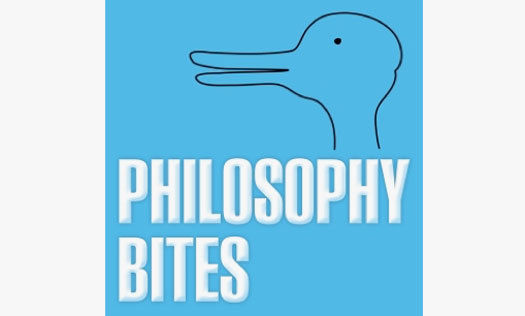
I spend a lot of time looking at the work of undergrad and post-grad visual communication students. The best work is frequently distinguished by an abundance of well-intentioned and sophisticated thinking around social issues. But I notice something else; it can be described as a reluctance to express ideas with clarity and brevity. It’s as if there is a fear — a loathing even — of simplicity.
It’s not hard to understand why. What bright intelligent person would want to produce the sort of facile and simplistic work that characterizes most advertising, branding and consumer driven design? Much more exciting to dive into the murky sphere of ambiguity, mystery and gratuitous complexity.
Yet it seems as if a generation of bright young things is losing the ability to produce simple, clear and straightforward visual communication. This is not a plea for reductionism. Instead, it's a plea for complex ideas to be presented with intelligence, directness, and clarity.
I was thinking about this while cycling round my local park. It’s a large tract of outer-London parkland inhabited by dog walkers, red-faced joggers and mournful looking deer. I usually listen to music while making my circuits. Lately, however, I’ve been listening to philosophy podcasts.
Of all the humanities, philosophy is the one that interests me most. But here’s my problem: I often read philosophical texts only to discover that the experience is like cycling into a headwind. I get to page 20 and my attention flags, with the result that a great deal of philosophical thought remains tantalisingly beyond my reach.
I realise the fault is mine. Philosophy is a subject that requires intense and prolonged study — philosophical writing can’t be dipped into like we might dip into an airport blockbuster. Yet it would be naïve to imagine that philosophers — just like young graphic designers — are never guilty of deliberate obfuscation: If everybody understands what you’re saying, perhaps you’re not saying anything deep?
The podcasts issued by the website Philosophy Bites offer a refutation of the notion that philosophy has to be impenetrable. Here is a guide to current philosophical ideas from over 100 thinkers on subjects such as Personal Identity, Free Will, Scepticism, Plato’s views on erotic love, and Aristotle’s take on happiness The format is simple. Each podcast lasts about 20 minutes and features an interview with a philosopher on a topic that they specialize in. The interviewer — Nigel Warburton — uses plain English to ask a series of succinct questions. He is quick to pounce on any replies that are not readily comprehensible, or which fly in the face of common sense. His vigilance has the effect of compelling the interviewees to respond in language that is clear and precise.

What can designers learn from exposure to philosophy via these elegant podcasts?
Since the 1950s, advertising people have turned to psychology for guidance in how to drill messages into the human psyche. Today, however, there is widespread resistance to the hard sell, and commercial subterfuges are easily spotted. Philosophy, on the other hand, with its focus on truth and ethics, seems more in tune with the contemporary zeitgeist. When this is coupled with the newfound willingness of philosophers to deal with questions that were once considered beneath the subject’s lofty aims, philosophy becomes an important aid for anyone interested in addressing “real world” problems. Multiculturalism, the comodification of the body, emotion, tolerance, and why our response to certain things is to say “Yuk,” are all topics dealt with in Philosophy Bites podcasts.
Thanks to design’s connectedness to nearly every aspect of daily life, the listener repeatedly encounters observations that relate to the practice of the craft. Exposure to current philosophizing refines our understanding of the world and inspires us to develop that most valuable of skills — critical thinking. And as exposure to these podcasts reveal, it is only by subjecting everything we come into contact with to intense interrogation that we can ever hope to understand anything.
But it is not only the philosophical content of these podcasts that will benefit designers. It is also the way in which thinkers repeatedly succeed in expressing complex ideas with clarity, directness and brevity. The almost casual elegance with which all the philosophers deliver their thoughts — no verbal tics or tortuous circumlocutions — is a revelation. Without exception the interviewees are characterized by a lack of the preening self-regard normally associated with modern punditry. Many admit to doubts and uncertainties. Variations on the phrase “If I'm right …” are often uttered. Dogma is notable for its absence. Instead, the listener is invited to eavesdrop on conversations where the human condition is treated with the inevitable uncertainty that confronts anyone attempting to find truth. To see what I mean, just sample the wonderful podcast called What is Philosophy?: each philosopher who is asked this seemingly facile question gives a different response.
Listening to modern philosophers it’s clear that philosophy has abandoned the armchair and moved into the shopping mall and cyberspace. A modern generation of philosophers are helpfully making it possible for us to travel with them and, at the same time, providing a master class in the power of condensed expression.


Comments [15]
Gyula Gefin
Graphic Design Faculty - Dawson College - Montreal
05.10.11
11:25
Just listened to "John Cottingham on The Meaning of Life." Very interesting. Will be checking out more.
VR/
05.10.11
02:16
I can also tell you that a solid foundation in cultural theory, communication and technology studies, phenomenology, and social and political thought has also provided a sensitivity to the delicate nuances and complexity of our world, and how design can 'work' in that world.
Though... I dare say that studies in poetry might yield a similarly powerful result.
05.10.11
04:04
But I think the dense, busy aesthetic is mostly anchored in a reaction to what was popular before. As the 80s/90s ushered in a severe reaction to the uber-clean graphics of previous years, today's youth are again rebelling against the slick presentation of the Aughties — perhaps hoping to reintroduce room for personal interpretation and discovery.
While I follow the minimalist school of thought almost dogmatically, I think we shouldn't be afraid to push the boundaries of what the viewer can "understand" or "retain". Of course, this should really only be done where it works conceptually.
05.10.11
06:11
Clients and designers both interject their perceptions of good taste on projects. Agree the idea of sharing thoughts on what may or may not be good is the best route to understanding and building a relationship.
In quality as well as clarity.
Cheers…
VR/
05.10.11
08:26
Ps I recognise that deer. He’s thinking about philosophy too.
05.11.11
08:39
05.11.11
04:45
05.11.11
05:30
05.12.11
06:42
05.12.11
10:06
there is that wonderful quote from nietzsches second book of "human - all-too-human" (translation my own, i never found it in english): "to improve style is to improve thought." it does not get much clearer (and humbling) than that.
but then, one could find the same conclusion when looking at frazetta paintings: why fuss around when you can make the whole thing straight to the point and in-your-face? another teacher might be mike mignola: why lose oneself in rendering each and every transition when the confident commitment to a definite shape yields so much impact? the best melodies usually are simple. the phrases we laud usually are very direct, with well-chosen words.
while philosophy is a good teacher, my guess is that almost everything can teach confident, almost bold, simplicity when it has this certain quality of unfolding its impact way before rationalizing about its impression even starts.
(theres a phenomenology high-five to daniel, btw - im about to write my masters thesis on husserl)
05.13.11
03:22
05.16.11
11:51
05.17.11
03:59
05.17.11
02:32
My work was more a political statement than a philosophical observation.
Great refreshing post
05.26.11
01:12